Marketing
The Best 4 Types of Marketing Strategies for Small Businesses

The Best 4 Types of Marketing Strategies for Small Businesses
Marketing today can be overwhelming – there are far more than 4 types of marketing strategies for small businesses to choose from.
Which ones should you focus on to grow your business?
What’s more, most digital marketing strategies are shrouded in darkness. How do SEO and content marketing work anyway?
In this article, we’ll demystify 4 types of marketing strategies for small businesses that you can use to grow your business.
Let’s begin!
A Marketing Strategy Definition
Before we start, let’s get on the same page with a quick marketing strategy definition:
Marketing Strategy Definition: A marketing strategy is an action plan designed to promote and sell a service or product.
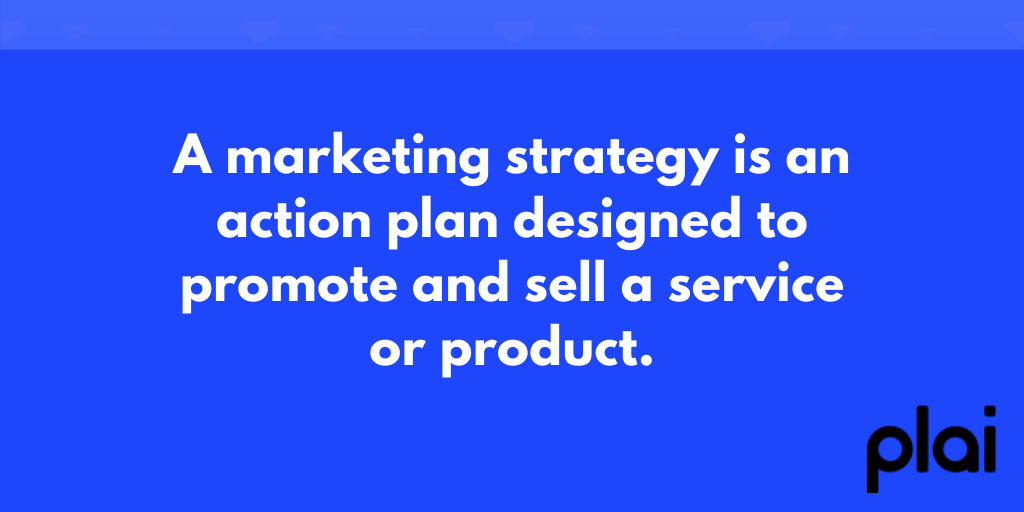
It’s that simple – simple, but not easy.
Still, a digital marketing strategy is essential to creating your dream business. As leadership Professor Lee Bolman once said, “A vision without a strategy remains an illusion.”
Okay, but what types of marketing strategies should you focus on – digital or traditional?
4 Reasons to Use a Digital Marketing Strategy
Let’s cut to the chase:
Digital marketing strategies trump traditional types of marketing strategies for small businesses.
Why?
Here are four reasons to focus on digital marketing strategies:
1. Digital Marketing Strategies are Easily Accessible
If you’re reading this, it’s likely that you already have a computer, an internet connection, and a desire to learn. As a result, you have everything you need to succeed at digital marketing!
There’s no need for an expensive marketing agency or hard-to-reach PR connections. (Especially with free, automated digital marketing apps like Plai!)
2. Digital Marketing Strategies are Highly Cost-Effective
Traditional types of marketing strategies for small businesses require a hefty budget – local radio, newspaper, and direct mail marketing all cost money from the get-go.
However, many digital marketing strategies cost nothin’ but elbow grease. Plus, you can start advertising on platforms like YouTube and Facebook for as little as $1 per day.
3. Digital Marketing Strategies Make it Easy to Reach Your Target Market
There are currently 4.46 billion internet users worldwide and 81 percent of Americans now own a smartphone.
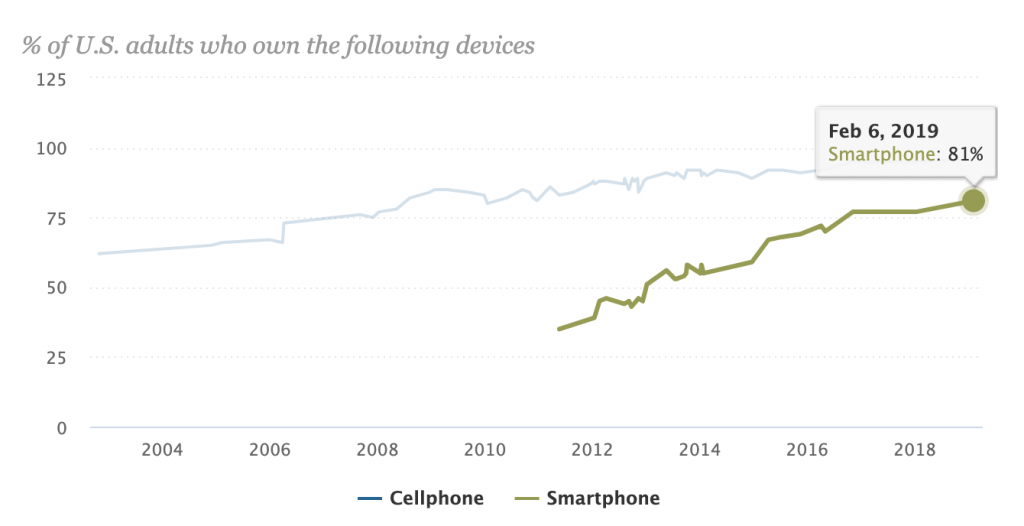
In other words, it’s never been easier to reach so many people so easily.
What’s more, digital marketing strategies provide countless ways to hone in on your target customers.
Check out some of the targeting options available when you create a Facebook ad:
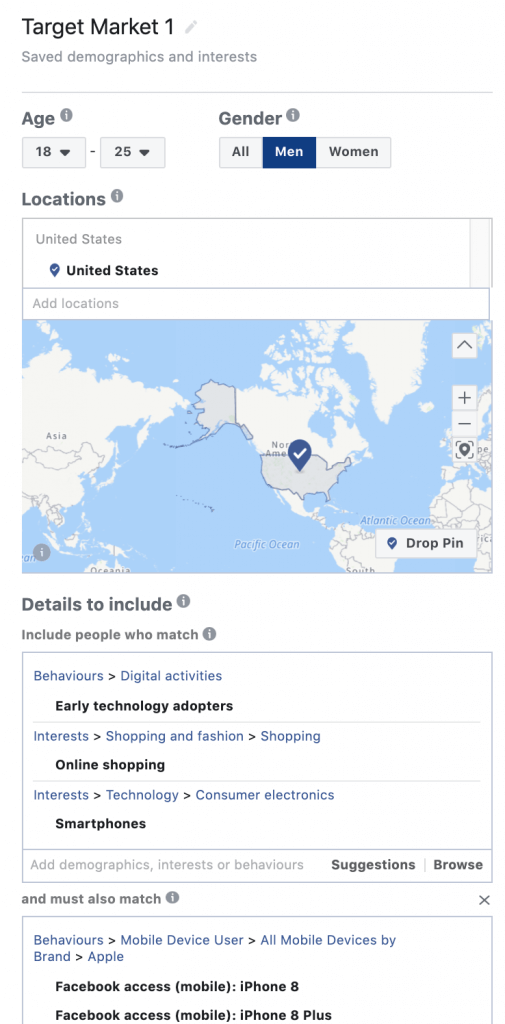
4. Digital Marketing Strategies Provide Detailed, Accurate Feedback
You’ll know exactly how many people interact with your marketing efforts, the ways in which they interact, and what you can do to optimize your digital marketing strategy.
Try working out how many people paid attention to your newspaper ad – let alone how many new customers it created for your small business!
Now that you know some of the benefits, let’s take a look at 4 types of marketing strategies for small businesses.
1. Social Media Marketing
Social media marketing is the process businesses use to turn social media users into customers.
It’s not a bad idea when you consider that 79 percent of the U.S. population uses social media platforms such as Facebook, Instagram, and Twitter.
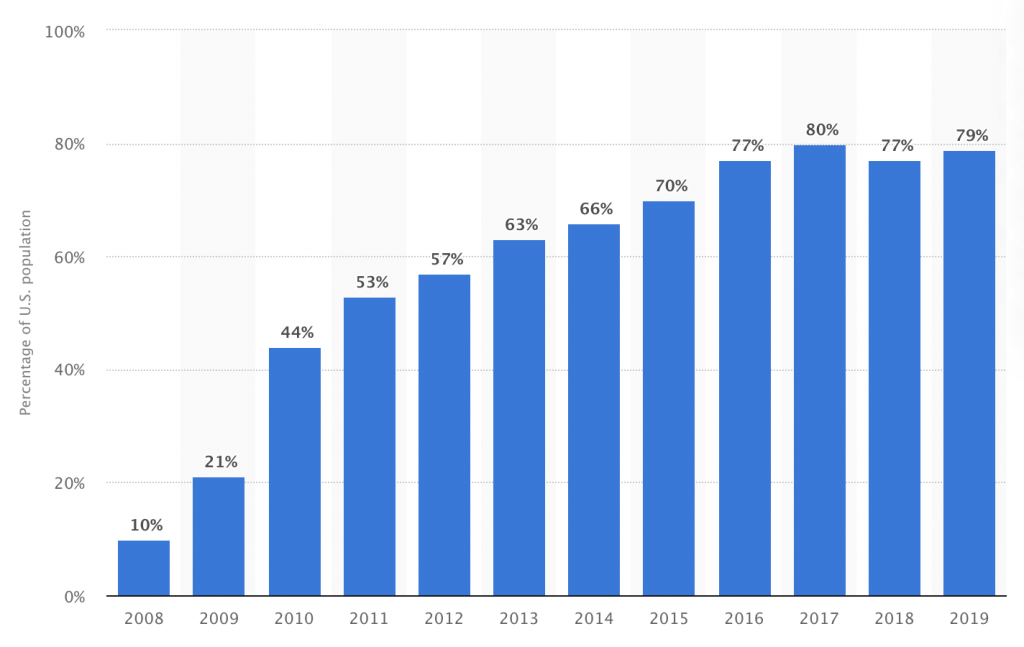
Now, there are two main aspects of social media marketing.
First up: Organic social media marketing. This “free” type of marketing strategy doesn’t cost money, but it does cost time and effort.
The idea is to focus on building a community around your brand. You can do this by sharing content such as articles and videos and by interacting with your target market.
Here’s an example of an organic social media post from Amazon’s Facebook page – notice how users are engaging with the post:
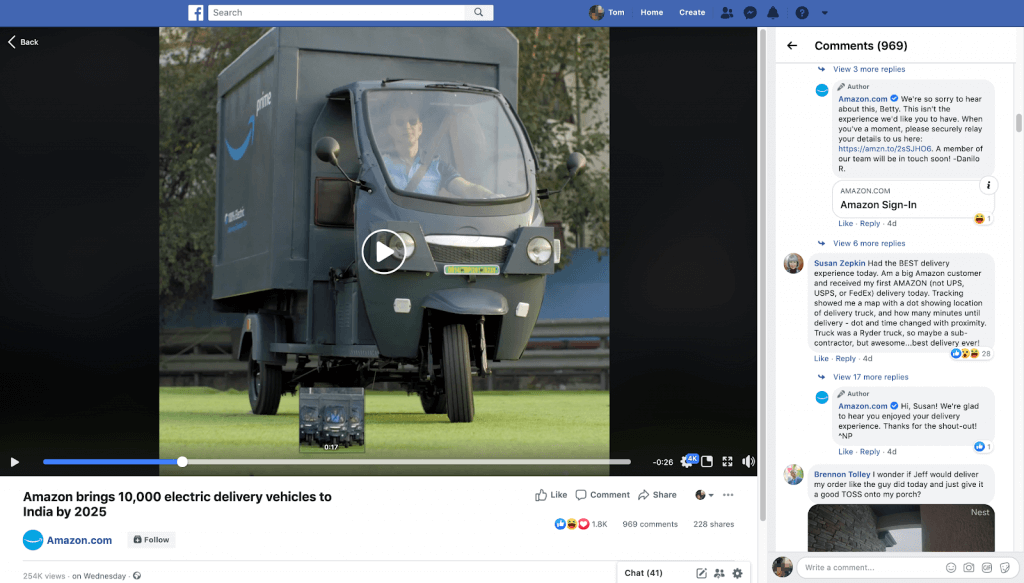
Next up: Paid social media marketing.
This type of marketing strategy for small businesses allows you to pay to display your advertisements to social media users.
Here’s an example of a paid ad placement Amazon displayed on Facebook:

We’ll dive deeper into paid advertising in a moment – let’s focus on organic social media marketing for now.
So, why is it one of the best types of marketing strategies for small businesses?
Well, it doesn’t cost any money and it’s great for building trust and strong customer relationships. Plus, you can go directly to where your target customers already spend time online.
And of course, social media platforms provide detailed tracking and metrics to help you improve your marketing strategy. The image below showcases Instagram’s analytics dashboard:

Social media marketing is competitive with an estimated 91 percent of businesses using it in 2019. Still, hard work and creativity can make you stand out from the crowd.
Start Social Media Marketing with Plai
Use Plai to find trending content in your niche to share with your followers!
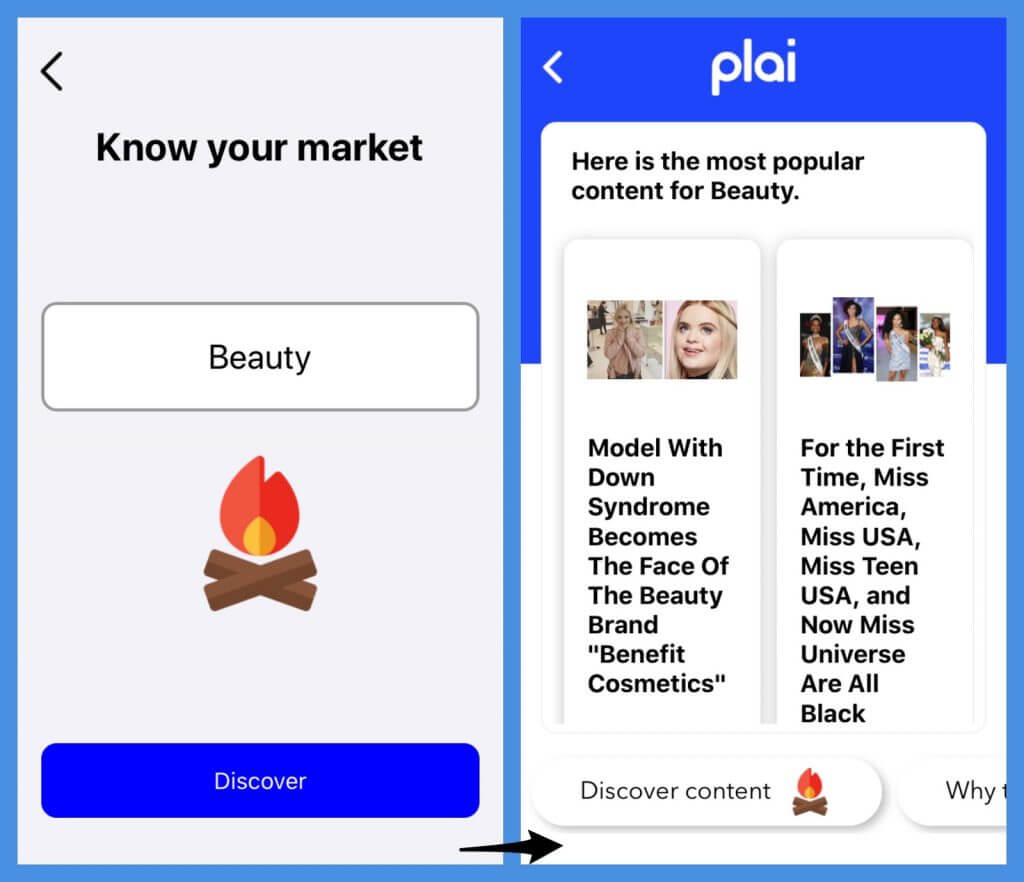
2. Influencer Marketing
What is an influencer?
An influencer is someone who has influence over and is trusted by a relatively large number of people. This includes:
- Celebrities like Kylie Jenner.
- Niche celebrities like professional surfer Kelly Slater.
- Leading industry authorities like Kara Swisher who is a technology business journalist.
- Online bloggers with highly-engaged communities, like fitness influencer Ben Greenfield.
Influencer marketing is the process of collaborating with influencers to promote your product or service to their existing audience.
The watch brand Daniel Wellington harnessed influencer marketing to catapult the business to success.
In the image below, YouTuber Weylie promotes the brand to her half a million followers on Instagram.
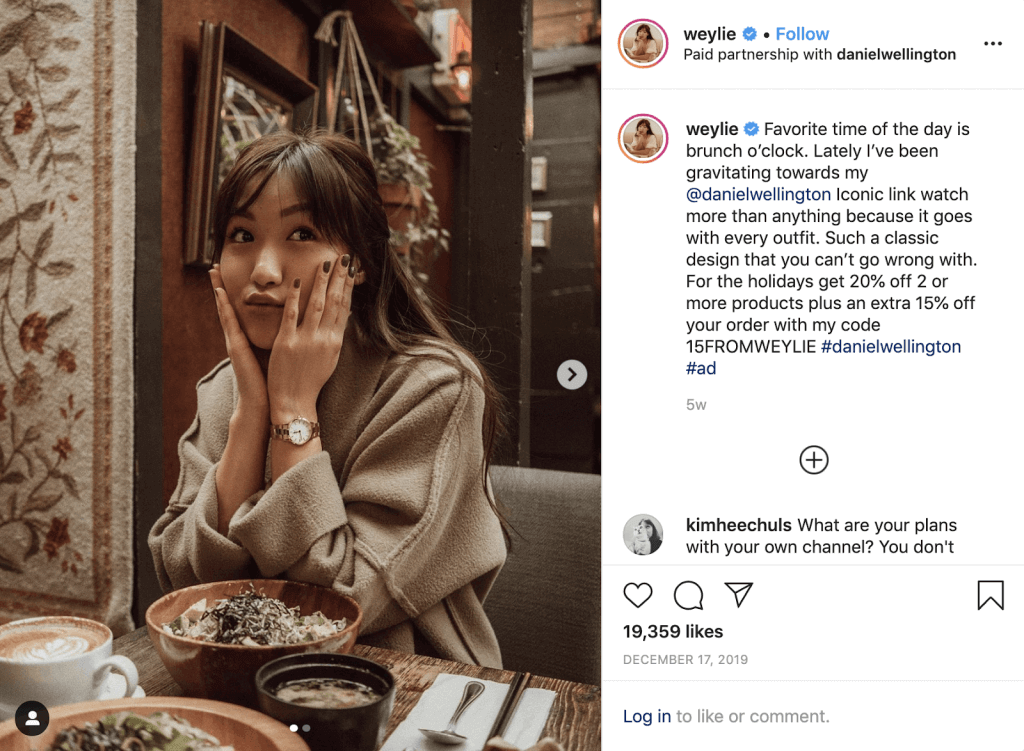
This is a powerful type of marketing strategy for small businesses.
In fact, 89 percent of marketers find ROI from influencer marketing comparable to or better than other marketing channels.
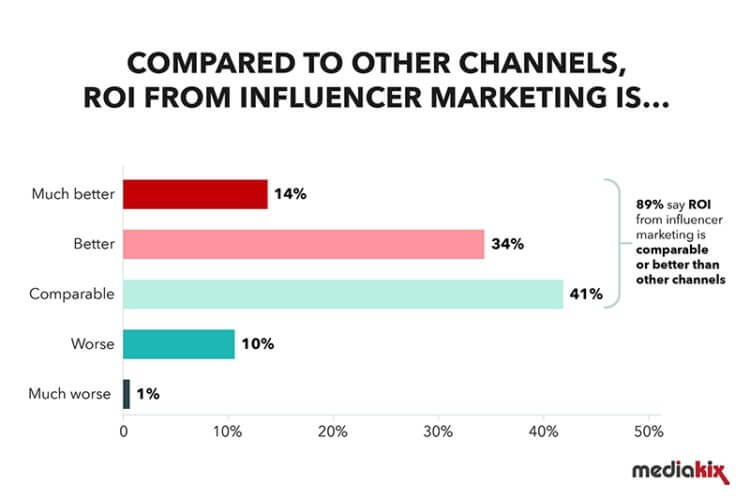
Why does it work so well?
Well, influencers have already taken the time to build an engaged audience that brands can tap into.
Plus, this type of marketing strategy utilizes a concept known as “social proof” – in other words, people are heavily influenced by others’ opinions, actions, and recommendations.
What’s more, some smaller influencers will partner with brands in exchange for free products or exposure.
That said, on average, a sponsored post on Instagram costs $180 – check out the image below to see the average rate for your niche.
Just ask Plai...
“How many visits do I have today?
Do people find my website engagement?”
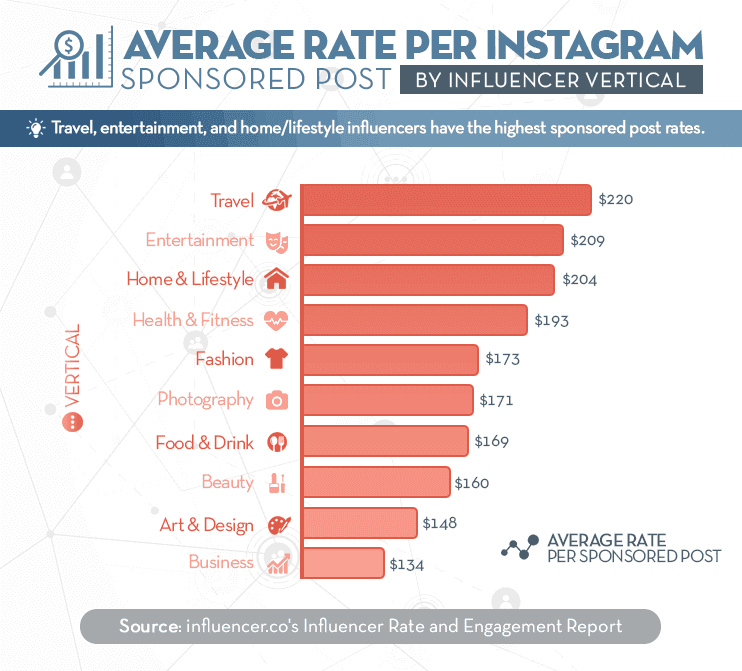
We asked author and digital strategist Jason Falls, marketing expert at Cornett for his take on this type of marketing strategy:
“Think long-term for your influencer strategy. Build relationships, not invoices!
“Yes, you’ll have to come to bat with a little bit of a budget in most cases. But if you choose an influencer that aligns with your brand, what you’re trying to do and what you believe in, then approach them with an idea of a long-term partnership where they can benefit as much as you do, you’d be surprised how interested they might be in just taking the relationship further.
It’s not about advertising to their audience. It’s about aligning with their worldview.”
Start Influencer Marketing with Plai
Let Plai discover 10 micro-influencers for you to collaborate with!
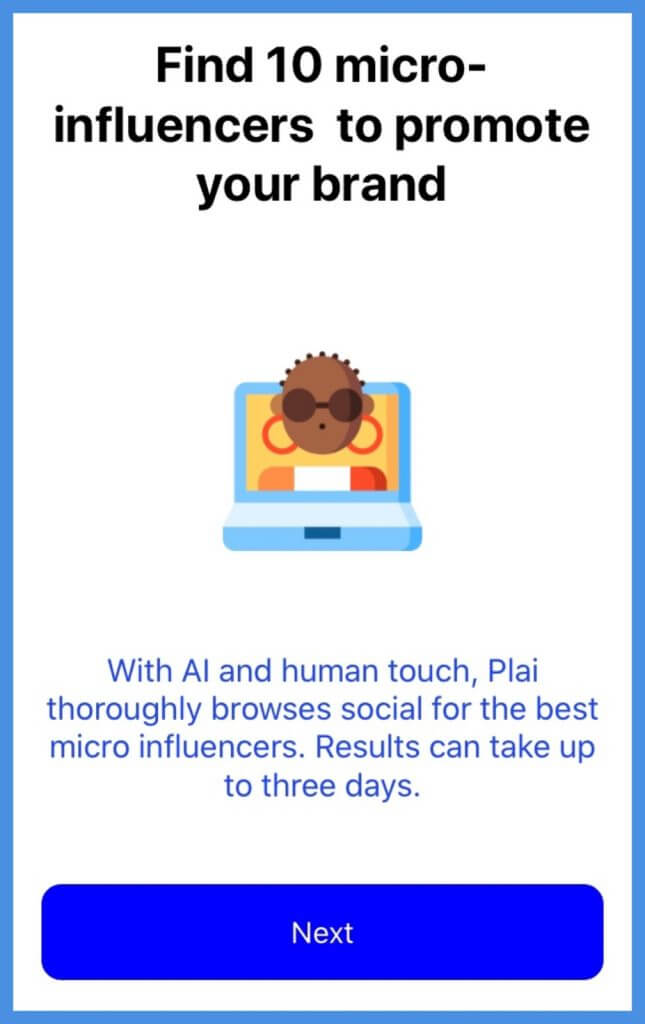
3. Paid Advertising
This type of marketing strategy for small businesses is closer to traditional marketing. But don’t despair – although it will cost you money, the investment is well worth it.
Google conservatively estimates that for every $1 a business spends on Google Ads, they receive $8 in profit.
Plus, there are plenty of advertising platforms to choose from, including Google, Facebook, Instagram, YouTube, LinkedIn, and Pinterest.
The image below shows Google ads featured on the search engine results page:
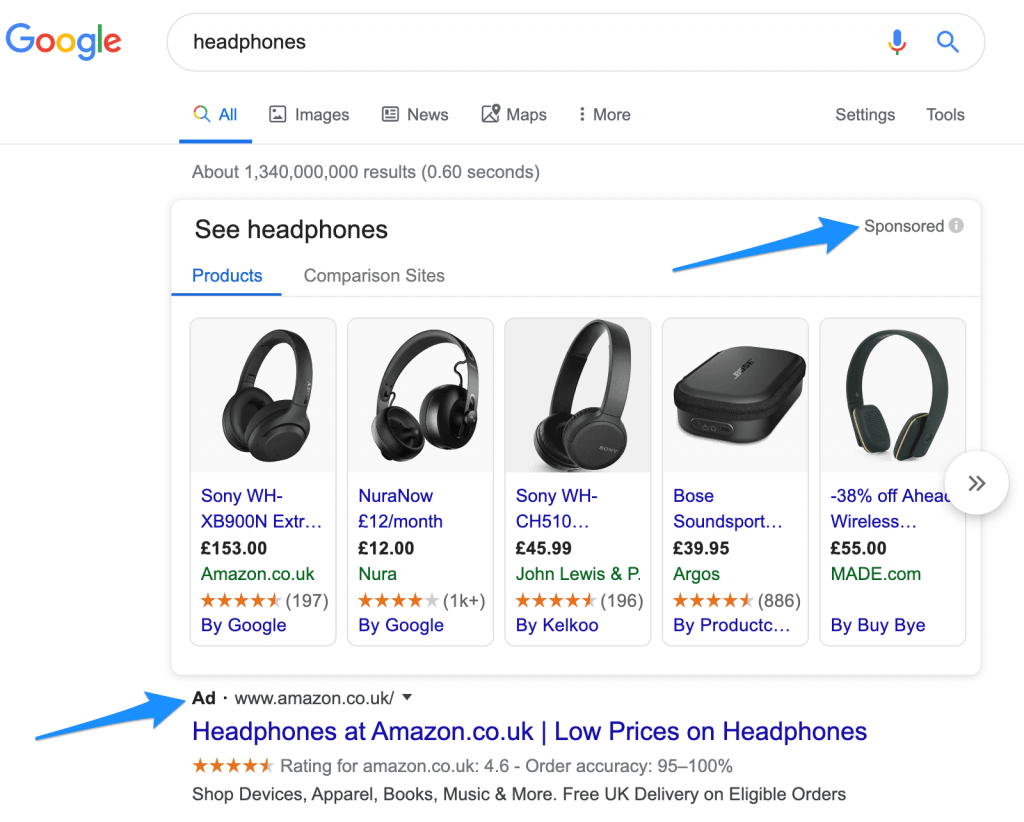
What’s more, each advertising platform provides multiple ways to display your ads – check out some of Google’s options in the image below:

The main benefit of paid advertising online is the fast return on investment. You can start boosting sales with online ads in as little as 48 hours!
You can also target your ads to your ideal customers with incredible precision. The image below shows an example of Instagram ad targeting:
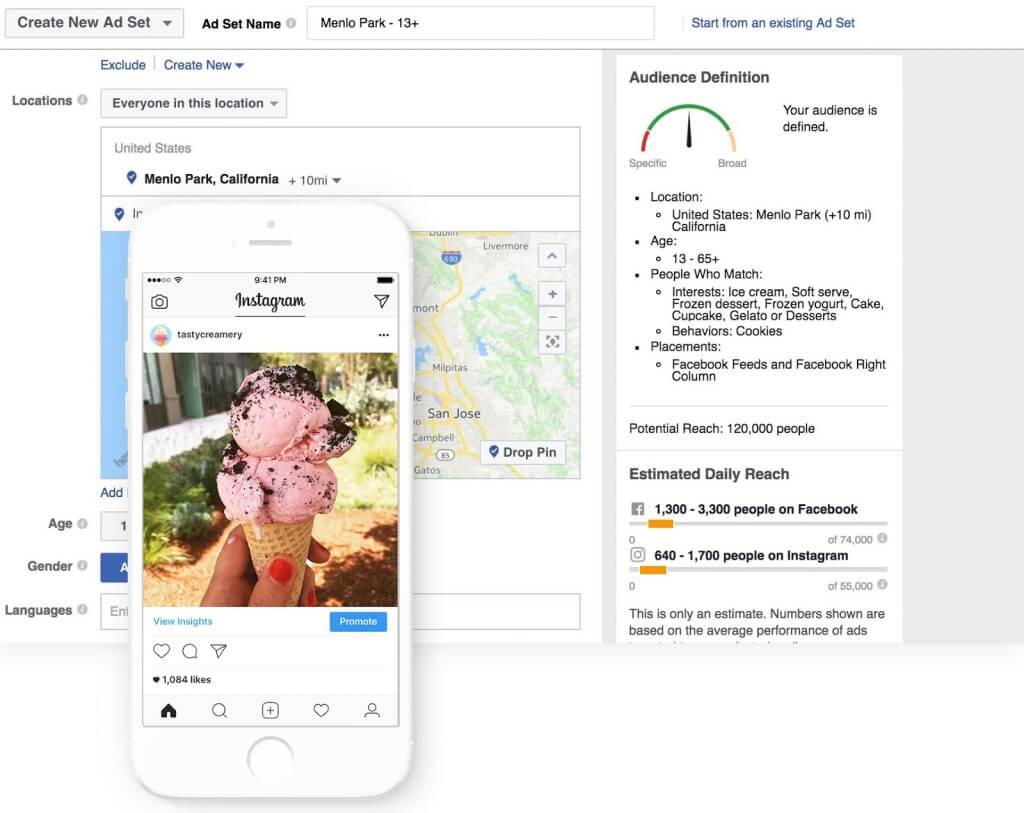
This type of marketing strategy also allows you to keep track of people who have been exposed to your business in some way and serve them more ads. This is known as remarketing and retargeting.
Start Paid Advertising with Plai
Plai makes it super-simple to create and track Google Ad campaigns with no expert knowledge required.

4. Search Engine Optimization (SEO)
Search engine optimization (SEO) is the process of getting a website to appear higher up the search engine results pages to increase traffic to your website.
For example, say that you wanted your online language course to appear at the top of Google when people search “online language course.” Well, the process you would use to do this is called SEO.
In this case, Duolingo scores the top spot, ranking higher than 8.15 billion other results!

Google receives over 80,000 searches per second. That’s a lot of potential customers! However, 75 percent of people never scroll past the first page of search engines.
That’s why the first page is so coveted.
What’s more, internet users prefer organic listings over paid advertising placements. In fact, for every time someone clicks on a paid search result, the organic results generate 8.5 clicks.
Awesome, right?
We reached out to award-winning digital marketing consultant Tom Pick to get his take on this marketing strategy for small businesses:
“Organic search is often the biggest source of ‘free’ traffic for websites, typically accounting for anywhere from 40% to 80% of all visits.”
Pick highlights that SEO is a long-term marketing strategy.
“It’s like planting a tree; you won’t see huge results right away, but your search presence builds over time and produces long-lasting results.”
Get Started on SEO with Plai
Use Plai to discover keywords that have a high volume of searches.

5. Bonus: Content Marketing
Okay we know we said we’d cover 4 types of marketing strategies for small businesses… but we need to tell you about content marketing!
Here’s how this type of marketing strategy for small businesses works:
Businesses will create and distribute valuable and relevant content online. The aim is to use this content to attract and retain new customers.
So, what is “content” exactly? Well, there are many different types of online content, including:
- Blog articles
- Infographics
- Ebooks
- Emails
- Videos
- Case Studies
- Webinars
- Podcasts
(Pssst! This article you’re reading right now is content marketing!)
The idea is to provide value and develop strong customer relationships by helping, teaching, inspiring, or entertaining your target market.
As the American author Robert Collier once said, “You have to sow before you can reap. You have to give before you can get.”
Beardbrand creates and share blog posts designed to help their target market:
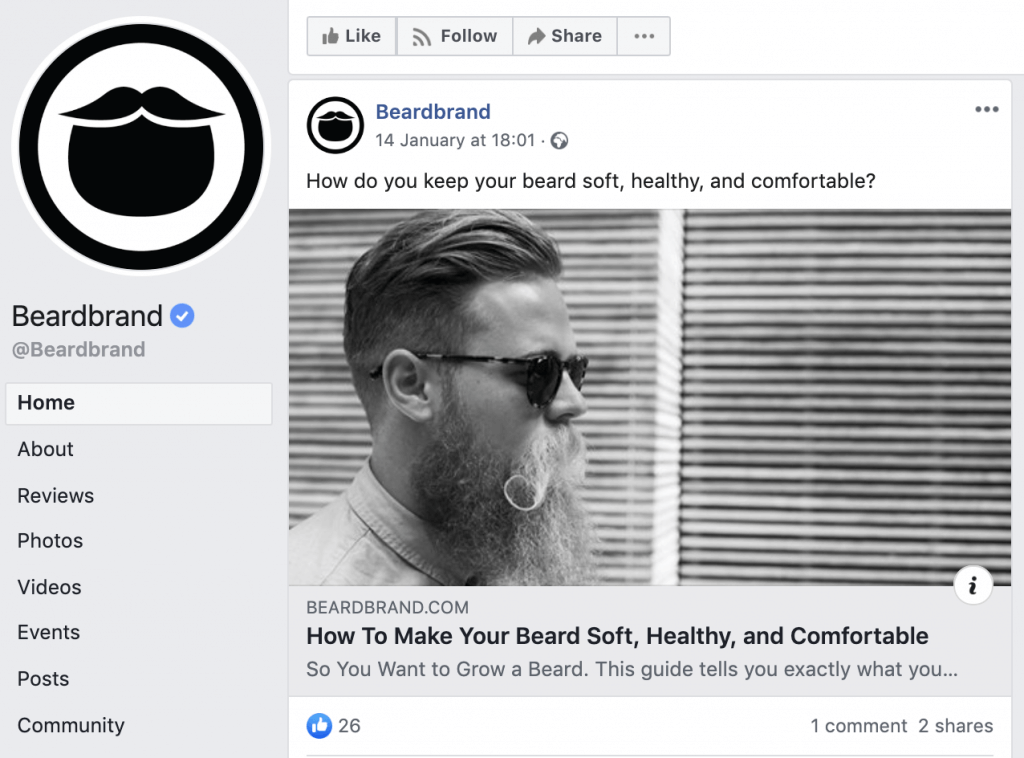
Content marketing is also closely related to social media marketing and SEO. This is because you can optimize each piece of content for specific keywords to rank on Google and then share the content on social media channels.
As a result, content marketing gets three times more potential customers than paid search advertising.
Digital marketing consultant Tom Pick told us, “Creating and optimizing content that’s focused on solving your customers’ problems is the best way to attract relevant website visitors, and keep them engaged and interested in your business once they find your site.”
He’s hit the nail on the head there.
However, like SEO, content marketing is a long-term strategy. You need to post high-quality content regularly to build momentum and it can take time for the results to accumulate.
It’s takes a lot of commitment and effort over the long-haul.
Still, when you get up to speed, content that you share today can attract organic traffic from Google for years to come.
Get Started with Plai
Use the trending content finder and keyword tool to come up with great content ideas.
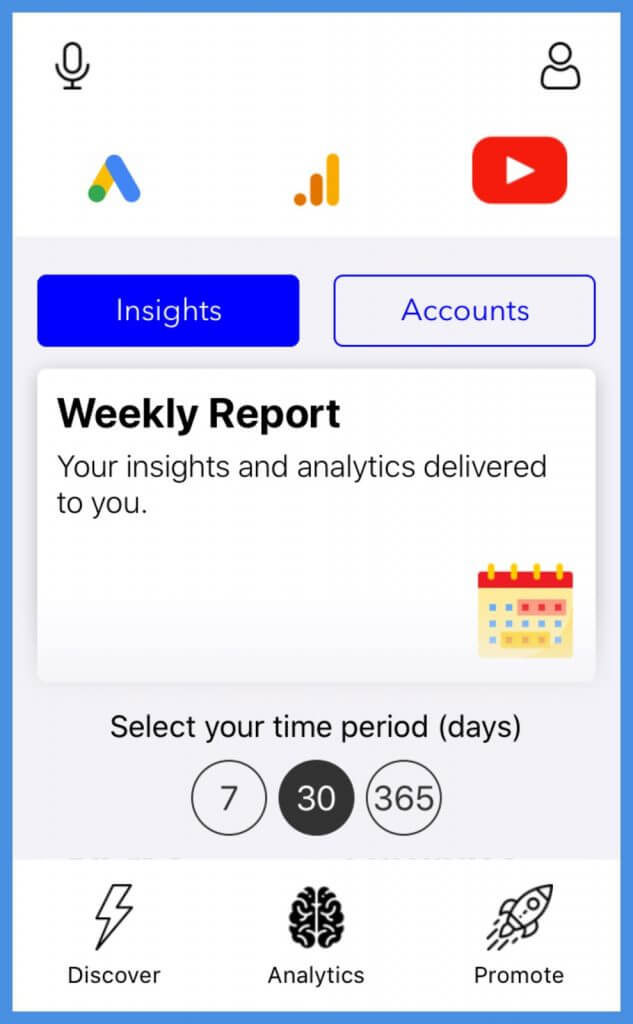
Summary: 4 Types of Marketing Strategies for Small Businesses
There are far more than 4 types of marketing strategies for small businesses. However, the marketing strategies we’ve covered are a great place to start.
Here’s a quick summary of each type of marketing strategy:
- Social media marketing: Connect, engage and develop strong relationships with your target market on channels like Facebook, Twitter, and Instagram.
- Influencer marketing: Partner with people who have an existing following to market your business to their existing audience.
- Paid advertising: Pay to display your ads to your target market on advertising platforms like Youtube, Google, and Facebook.
- SEO (Search engine optimization): Optimize your website and content to appear higher in the search results to capture more “free” traffic.
- Content marketing: Create and distribute original content to attract your target market and turn them into loyal, engaged customers.
What types of marketing strategies do you use? Let us know your thoughts and questions in the comment section below!
⚡Trusted by 100K+ ad campaigns















.png)

.png)

.png)
.png)
.svg)


.svg)









